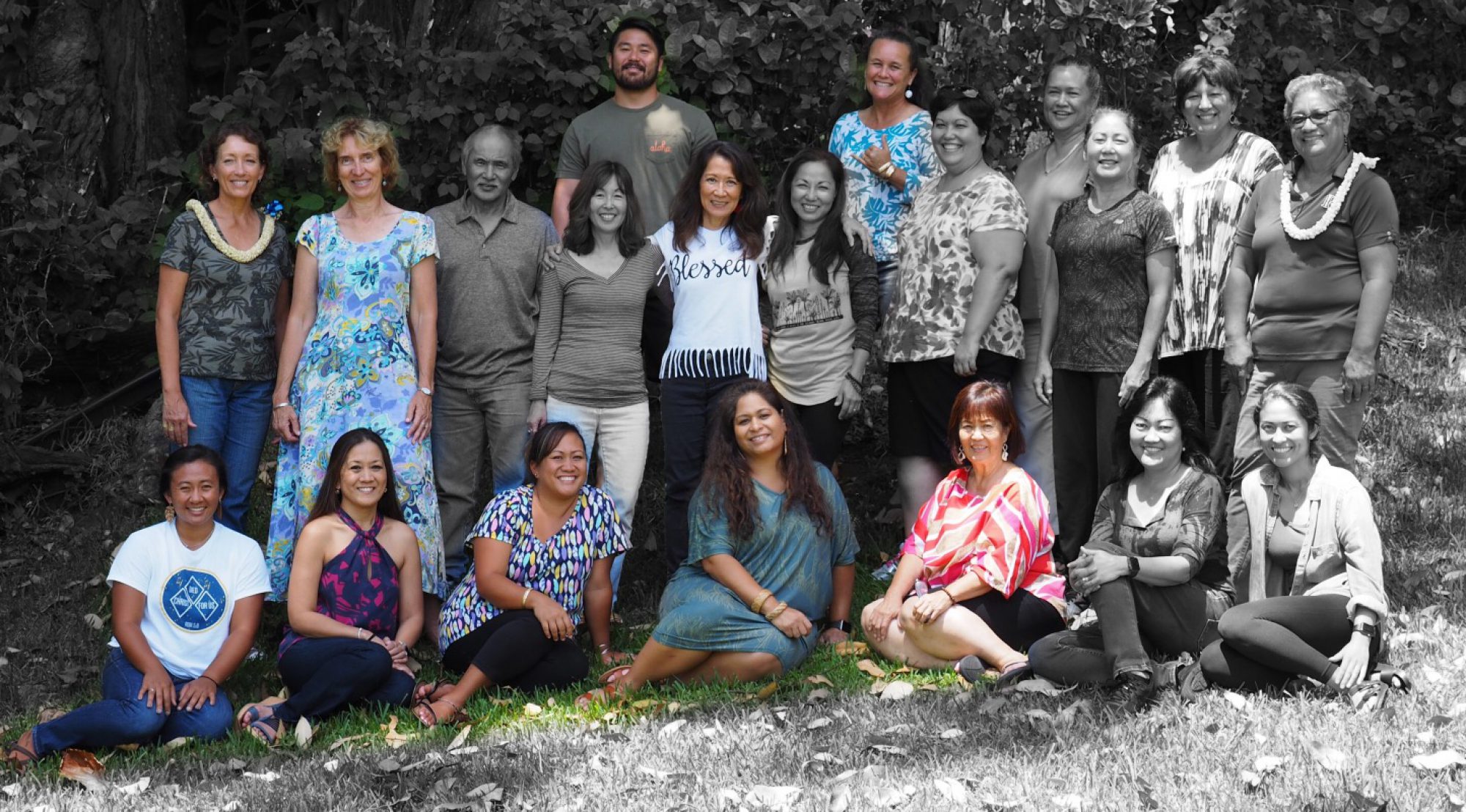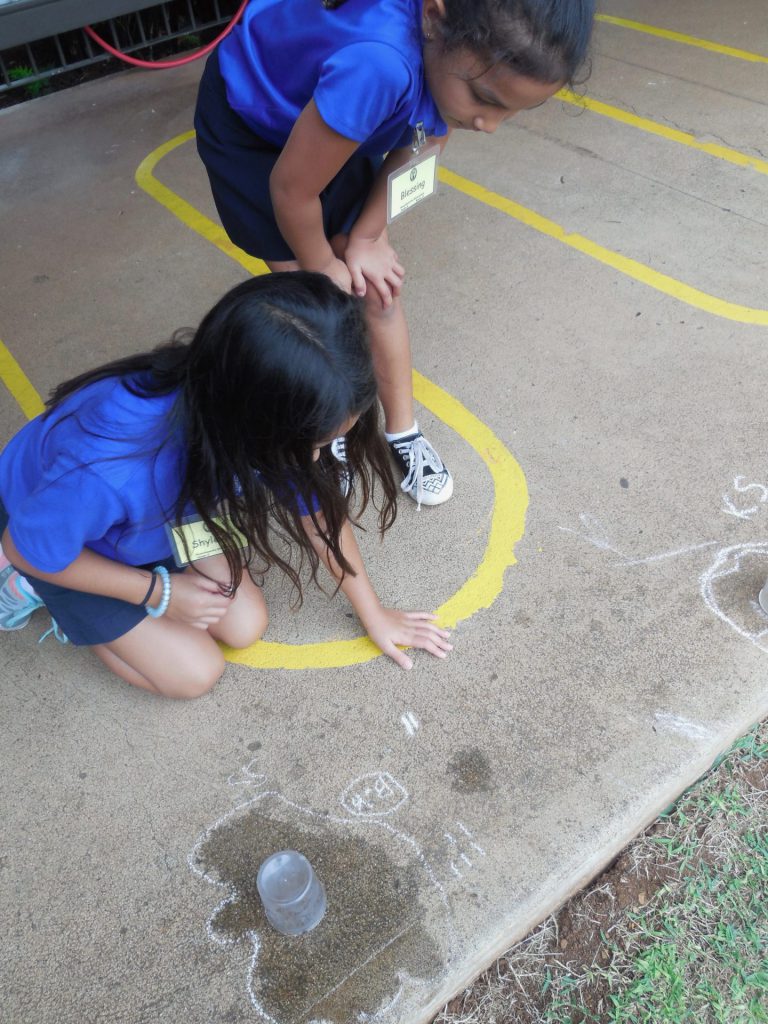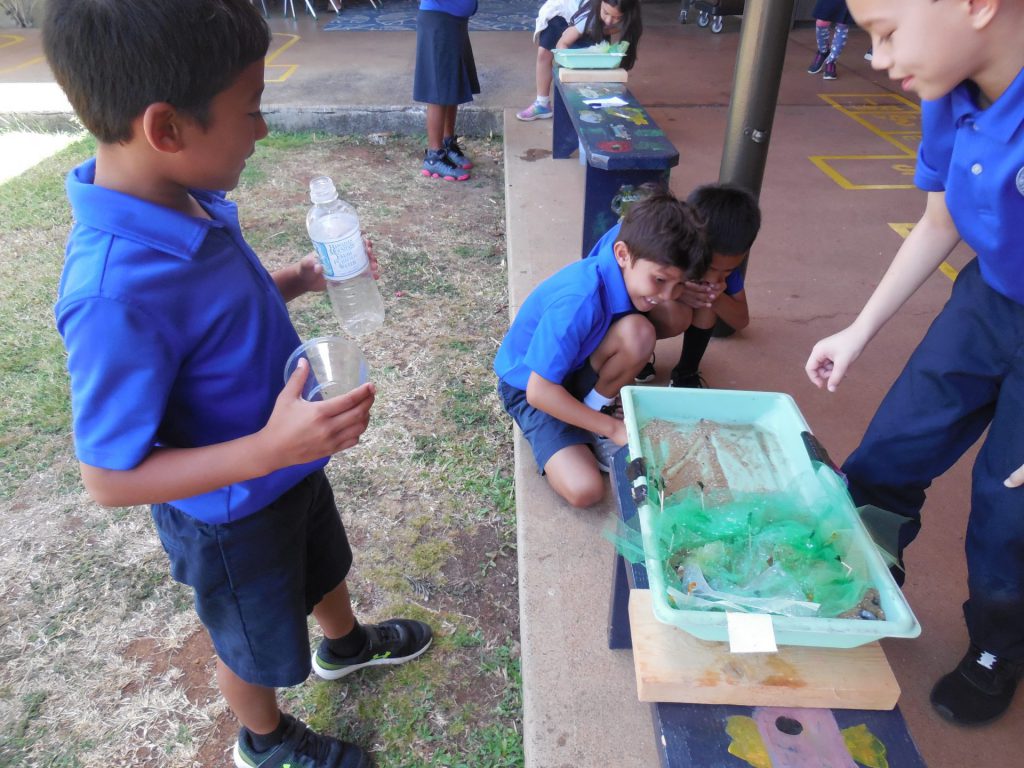What does it mean to be a Hawaiian scientist? In second grade, children at Kamehameha experiment to focus their observation skills on the big idea of cause and effect. They explore how this concept builds to the concepts of relationships, systems and interactions. They learn more about the skills and tools that scientists use to investigate questions. They gather information in a variety of ways and then reflect upon what they have found both independently and in small groups. They record information in detailed observations to use in further discussions and experiments. They look for information from many sources and discover more about how their ancestors were natural scientists. ‘Olelo no’eau and mele help us learn from our ancestors telling us their past observations and discoveries.
Students begin their work investigating what their ancestors knew about water in this island home and how that relates to our world here today. They examine the water systems here and our planet from a Hawaiian cultural perspective with the mele, “Aia I Hea Ka Wai A Kane?” Where did water come from and where does it go? We borrow fresh water from the water cycle and put it back for nature to clean it. It is a key to survival on an island in the middle of the salty sea. That process has continued for millions of years but we impact it by the way we use the water and the way we change our land. Haumana explore how flowing water changes our land and how both we and our land change water. Erosion is a natural process that impacts our lives on this island. Sometimes it is a slow process—like the making of Waimea Canyon on Kauai. Sometimes it is a fast process like the landslide on the Pali Highway. Both impact our islands where we live. We have an impact on this process as well. How do we let water percolate into our island aquifer? How do we change land and create more runoff challenges? What we do can speed up water flow or help slow it down. How do we live with water?– because we can’t live without it!
Keiki life scientists observe and compare plant and insect life cycles while identifying key structures and functions. They investigate relationships that help them both survive. Insects need plants for their life cycle-they provide habitats and food. Plants need insects for pollination to continue their own life cycle to make fruit and seeds. We visit Keanakamano as a living laboratory of Hawaiian plants and their insect buddies. What challenges are there for survival in Hawaii? We investigate to learn more and use our learning in the engineering design model. Scientists in Hawaii are using these same processes to find ways to help endangered species improve their survival in our island habitats. How can we be Hawaiian scientists now and in the future? Our adventures continue…





